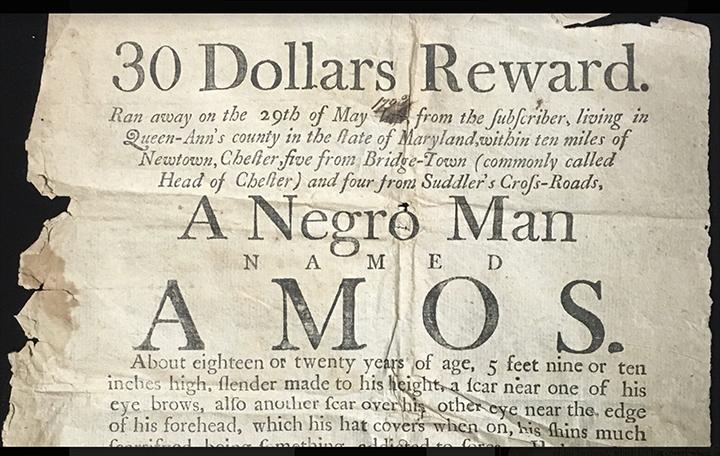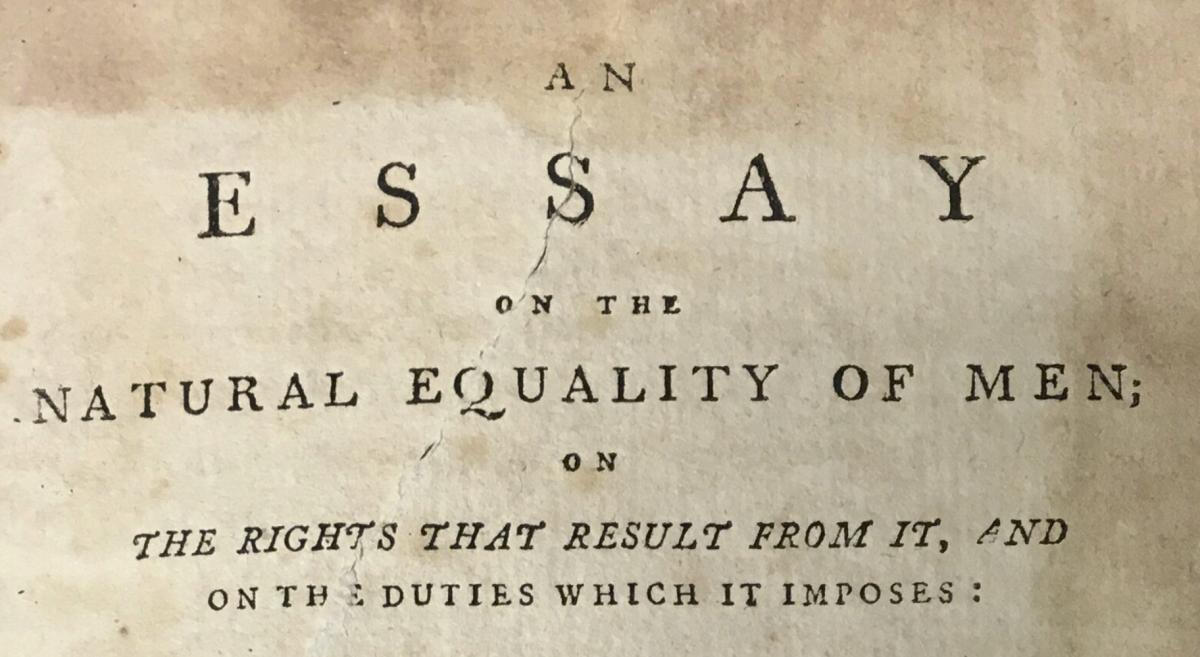Sometimes there’s more in an old house’s attic than moldy winter clothes, broken children’s toys, and mice enclaves. Sometimes there’s treasure.
And treasure, hundreds of rare 18th and 19th-century documents, were found in the attic of a Queen Anne’s County house on the brink of demolition. The retrieved papers, some 2,000were sent to auction at Crumpton. Luckily, an eagle-eyed historian—Starr Center for the Study of the American Experience Director Adam Goodheart—noticed the auction online and knew what he was looking at: rare slave documents and other papers related to Black history on the Eastern Shore.
The full story written by Michael E. Ruane appeared in Monday’s Washington Post.
Ruane describes the first moment he saw the small broadsheet that offered a reward for a runaway slave “A Negro Man Named Amos:
“It was chilling. There, on cheap rag paper, was the story of American slavery. Amos was “a smart fellow,” about 20, who might be headed for his mother in Philadelphia. But in 1793 he was the property of one William Price, who wanted him caught.”
Charles Sumner Hall just released their official announcement about the find:
“The Commodore Collection of original historical documents on the early experiences of African Americans in Kent and Queen Anne’s counties is a rare find,” according to Dr. Ruth Shoge, First Vice President of Sumner Hall. “The documents, which are intellectually enriching, also evoke an emotional response to the harsh reality of the lives of enslaved and freed Black people in 17th and 18th century America,” she continued. “It is very important to Sumner Hall that this collection has been given to us in perpetuity. The ownership of this collection is an honor and, in a special way, a homecoming for the memories of our ancestors. This collection supports our mission of promoting an understanding of the African American experience within the overall context of American history and culture.”
Thanks to the efforts of local Black residents and the Starr Center for the Study of the American Experience at Washington College, approximately 2,000 pages of documents were purchased from Dixon’s Crumpton Auction this spring. The collection, named after Washington College’s first local Black alumnus, Norris Commodore ’73, will belong to Sumner Hall but is being conserved and archived at the school’s Miller Library. Mr. Commodore, who has deep roots here, gave generously toward the acquisition cost and was joined by the Hedgelawn Foundation, the Kent Cultural Alliance and the Andrew W. Mellon Foundation.
The papers are being digitized as a part of the Chesapeake Heartland Project and several can already be viewed online here. President of Sumner Hall’s Board of Directors, Larry Wilson, says, “The Commodore Collection is a very meaningful record of African American life and survival. I believe that it is very important to know our history and to learn from the lives of our ancestors as we work together for equal rights, justice and freedom in this county and across the country. We look forward to having exhibits at Sumner Hall based on these materials soon.”
For more about Sumner Hall, go here.



Alexa Fry says
Many thanks to Mr. Commodore and other residents who invested in this VITAL piece of Eastern shore history!
Billie Carroll says
Could you please tell us where the Ripley House was located?
James Dissette says
Although not disclosed to us, a quick Google search finds a Ripley house in Chruch Hill, QA County. Builtin 1805, but with ownership of property dating back to the late 17th-Century, it’s our best guess,